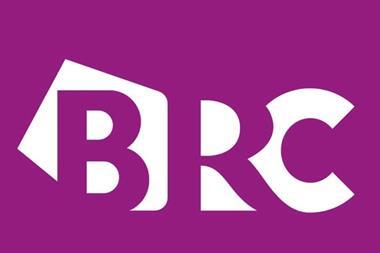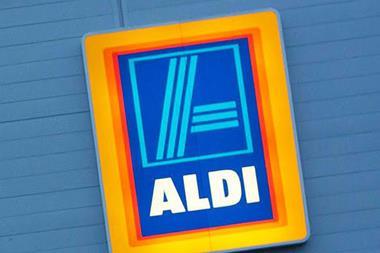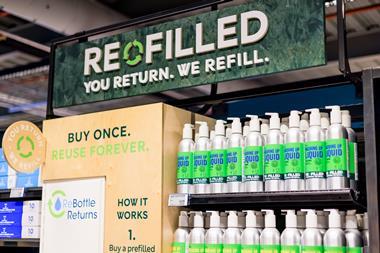
Britain’s supermarket supply chains have come under renewed scrutiny in the wake of last week’s mass recall of ready meals and potato salads.
More than 50 products, primarily from Sainsbury’s, were recalled over fears they might contain pieces of metal. FSA and internal investigations are continuing this week, and the issue will have retailers asking their suppliers searching questions about safety processes.
A snapshot of UK food safety is offered by the latest report on data collected during the BRC Global Food Safety Standard audits, published just weeks before Sainsbury’s staff began pulling cottage pies from chillers. Broken into 18 categories - such as raw poultry, ready-to-eat meals and beverages - it provides a glimpse of how UK food production stacks up against the rest of the world.
Monitoring the global food safety situation is a valuable exercise, says Asda technical head of fresh food Ian Smith. “We spend a lot of time ‘horizon scanning’ - looking globally for issues that can and should be fed through into our knowledge and awareness. All the data we capture is shared with all our supplier colleagues.”
Generally, the BRC report paints a picture the UK industry can be proud of. Accounting for about 10% of the businesses accredited under the Global Food Safety Standard, the UK achieved the highest proportion of facilities to get the BRC’s top A grade, at 92.8% versus 87.8% for second-placed US.
“There is a lot of very good working going on in the UK,” says BRC technical director David Brackston, adding much of this is driven by the retailers. “Despite the knocks we get, we have an extremely diligent food safety culture in the retailers.”
But the report flags up areas of concern for the UK - including issues with documentation-keeping in a number of sectors.
“Documentation is one of the more frequently occurring non-conformities,” says Brackston. “The documentation helps ensure consistency and helps people review what they are doing and improve on it.”
It also plays a key role should a business face prosecution, says Katharine Vickery, partner at law firm Eversheds. “Documents that are clear and accurately completed will go a long way towards establishing a due diligence defence.”
A common cause of problems with documentation is that systems may develop incrementally, resulting in over-complicated, inconsistent processes, adds Vickery. “How employees are trained, coached and supervised should be reviewed to help move a business towards a culture where documents are completed accurately and willingly, rather than being seen as a tick-box exercise.”
Asda’s Smith suggests data technology has a role to play. “Best practice would be a move towards data entry at the point of control through technology such as smart pads and electronic capture of daily working procedures,” he says. “This would allow for systems and data to link all the way back down the supply chain to the growers and manufacturers.”
Another issue flagged in the BRC report was failure to maintain doors in a good condition. While arguably not the most serious of issues, poor management carries risk of pests and foreign body contamination.
“Employees should be aware of the procedure to report door damage to line managers,” says Food Business Development Company founder Susan Pieterse. “A senior manager should be responsible for ensuring foreign matter prevention control systems are effective.”
Last week’s metal contamination recall has raised questions over the use of metal detectors, and the BRC report refers to issues related to metal detectors and x-rays in the UK raw prepared products category.
Speaking to The Grocer last week, Professor Chris Elliott - who led a government inquiry into food supply chains - said: “I can’t think of any large manufacturer that doesn’t have metal detectors, so you have to ask why they didn’t work.”
The BRC believes its standard is robust regarding metal detectors. “They are covered in the audit - where they are on the line, for example, and how they are set up and used,” says Brackstone. “It comes up from time to time but not as a major issue in our audit reports.”
Threat from allergens
While no one would make light of physical contamination, most experts say what really keeps them awake at night are microbiological or chemical contamination issues that have the potential to kill.
“The methods of addressing these are all readily available - systems and procedures, training, sampling, auditing,” says Vickery. “The challenge is the cost of achieving these methods, particularly given pressure to keep food prices competitive and deliver growth.”
For suppliers, another source of pressure is the sheer number of audits they face as customers seek to maintain the UK’s high standards. In addition to an annual BRC audit, they may receive many visits from individual trade customers conducting their own audits; one dairy supplier reckons he can get one visit every two weeks.
The industry is keen to reduce the burden of multiple audits, and to this end Asda has worked with the BRC to ‘bolt on’ its own requirements to the BRC audit. This combined audit negates the need for a standalone Asda audit.
Suppliers have been able to opt into the BRC/Asda ‘bolt-on’ audits since February, and the BRC says it is too early to measure take-up. But should the system succeed in reducing costs and the number of clipboard-carrying visitors then we could well see similar models rolled out by the wider industry.
BRC AUDIT SYSTEM
The BRC Global Standard for Food Safety certification is primarily used by suppliers of own-label products to retailers and foodservice
Audits are typically carried out annually by independent auditors using BRC criteria across areas such as management commitment, hygiene and HACCP
Following a site audit, companies are notified of any non-conformities identified
Non-conformities must be corrected before certification can be awarded



















No comments yet